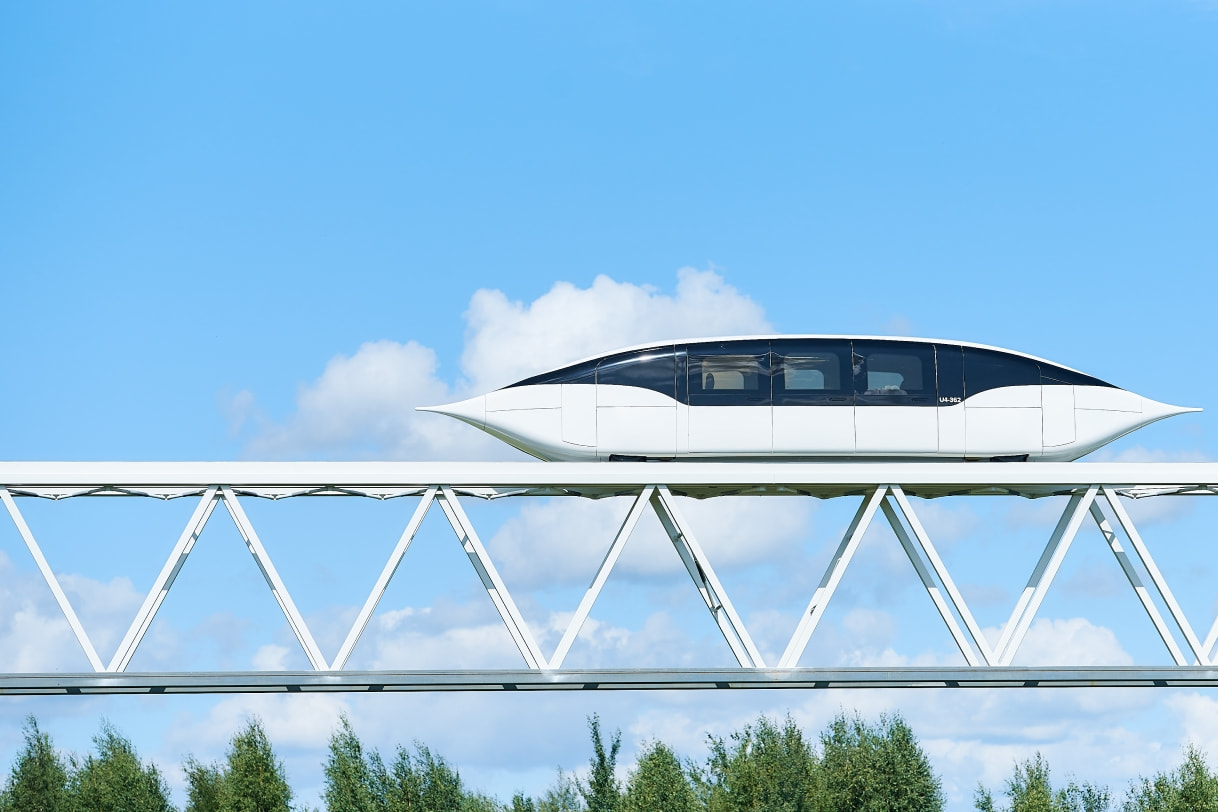Typically, at high speed, vehicles spend up to 90% of their energy on overcoming aerodynamic drag. The air resistance increases quadratically with increasing speed. And the ground effect is added — an aerodynamic phenomenon that occurs between the road and the car. In order to overcome these, the vehicle engine needs to work harder, increasing energy consumption.

«At high speeds and in strong winds, air resistance determines how the car accelerates, how controllable it is and how it consumes energy», — explains Deputy General Designer for Science Sergey Artyushevsky.
In uST transport, the problem mentioned above has been solved with a rail-string flyover. Positioning the track structure above the ground completely eliminates the ground effect. The streamlined body of the Unimobiles effectively reduces the vehicle's energy consumption. Besides, it can safely accelerate up to 150 km/h (high speed — up to 500 km/h). All this makes the uST transport and infrastructure complexes a truly cutting-edge solution.

The uST high-speed uST transport model — uniflash — deserves special attention. Its air drag coefficient was reduced to 0.06. For comparison: among the top-ranking cars, the air drag coefficient can be as low as 0.175, for example.

